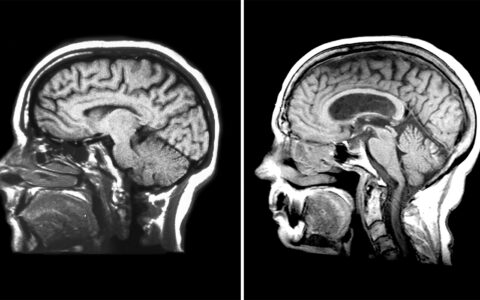Children who are hospitalized for influenza are at risk for potentially serious, and sometimes fatal neurological complications, but how often they occur and which children are most at risk is poorly understood.
A large new study published in the Journal of Pediatrics shows neurologic complications are common in children hospitalized with influenza and the risks are elevated among children who have chronic neurological conditions, such as epilepsy or cerebral palsy.
“We identified that children are most likely to have neurological complications, such as seizures or brain abscess, when they’re hospitalized with the flu. These findings highlight groups of children at highest risk in which to target our vaccination efforts,” said lead author, James Antoon, M.D., an assistant professor of pediatrics at Monroe Carell Jr. Children’s Hospital at Vanderbilt. Worldwide, seasonal flu is a major cause of morbidity and mortality among children.
The study found children with underlying chronic neurological conditions were almost four times more likely to have a neurological complication compared to those without underlying conditions.
“Most children with flu do very well, but for those who are hospitalized, neurological complications are commonly seen, and are associated with worse clinical outcomes,” Antoon said. Worse outcomes, he explained, include longer stays, more time in intensive care, more readmissions after discharge and more deaths.
Providing Needed Clarity
Some prior research sought to determine which children were most at risk for neurological complications upon being hospitalized with seasonal flu, but earlier studies were much smaller and produced conflicting results, Antoon explained.
“We tackled this question by using data on as many children hospitalized with the flu as we could to better evaluate these potentially very serious complications,” he said.
The research team used the Pediatric Health Information System, a database based on the experiences of patients at 49 children’s hospitals nationwide.
“These findings highlight groups of children at highest risk in which to target our vaccination efforts.”
The team identified 29,676 children between the ages of 2 months and 17 years who were hospitalized with flu to identify those with neurological complications, the frequency of each type of complication, and what risk factors might exist. The researchers also compared outcomes experienced by children who had neurological complications versus those who did not.
Febrile Seizures Most Common Complication
The primary outcomes the team identified were neurological complications, categorized as: encephalopathy, encephalitis, aseptic meningitis, febrile seizure, nonfebrile seizure, brain abscess and bacterial meningitis, Reye syndrome or cerebral infarction.
Neurological complications affected 7.6 percent of children hospitalized with the flu, with febrile seizure as the most common complication, occurring in 5 percent of patients. Encephalopathy occurred in 1.7 percent of patients, and nonfebrile seizure in 1.2 percent. Uncommon neurological complications were incidence of brain abscess and bacterial meningitis (0.1 percent), cerebral infarction (0.05 percent), and Reye syndrome (0.01 percent).
Longer Stays, More ICU Time, Higher Costs
Secondary outcomes identified were hospital-based, including length of stay following admission, admittance to the ICU and length of stay there, deaths during the hospital stay, and costs associated with inpatient episodes that involved neurological complications of flu.
“Year after year, children are underimmunized for flu, even though we know that getting immunized will decrease how often you get the flu and the severity of the flu.”
Children with neurological complications after hospitalization for influenza had a number of commonalities, including longer-than-average hospital stays than those without neurological complications (2.5 days versus 2.2 days); more ICU admissions (24.5 versus 15.3 percent); longer ICU stays (2.7 versus 2.2 days); more in-hospital deaths (0.7 versus 0.2 percent); and higher hospital costs, ($6,013 versus $5,282).
Groups at Especially High Risk
“Children with an underlying chronic neurological condition – epilepsy, brain malformations, and other neurological diseases – were at highest risk for neurological complications when hospitalized with influenza,” Antoon said.
The researchers found that the majority of pediatric hospitalizations caused by seasonal flu occurred in male children (56 percent), those six years or younger (66.2 percent), and those with government insurance (61.8 percent). Children of Asian ethnicity were at higher risk than those who were of non-Hispanic white ethnicity.
Interventions to Boost Vaccination Can Help
The findings are particularly noteworthy given influenza is a preventable infection, Antoon said. “Year after year, children are underimmunized for flu, even though we know that getting immunized will decrease how often you get the flu and the severity of the flu.”
Resistance to getting the flu vaccine, despite its critical importance for many children, has direct parallels in the furor over pediatric COVID-19 vaccinations. Encouragingly though, a recent systematic review based on 35 studies demonstrated that a variety of interventions can improve the rates of pediatric vaccination against seasonal flu.
The review involved five types of interventions: parental reminders, parental education, provider reminders, provider education and changes to clinical processes. These interventions enacted either singly or in combinations resulted in improved rates of vaccine acceptance by parents on behalf of their children. No single remedy alone was identified as more effective than the other.





